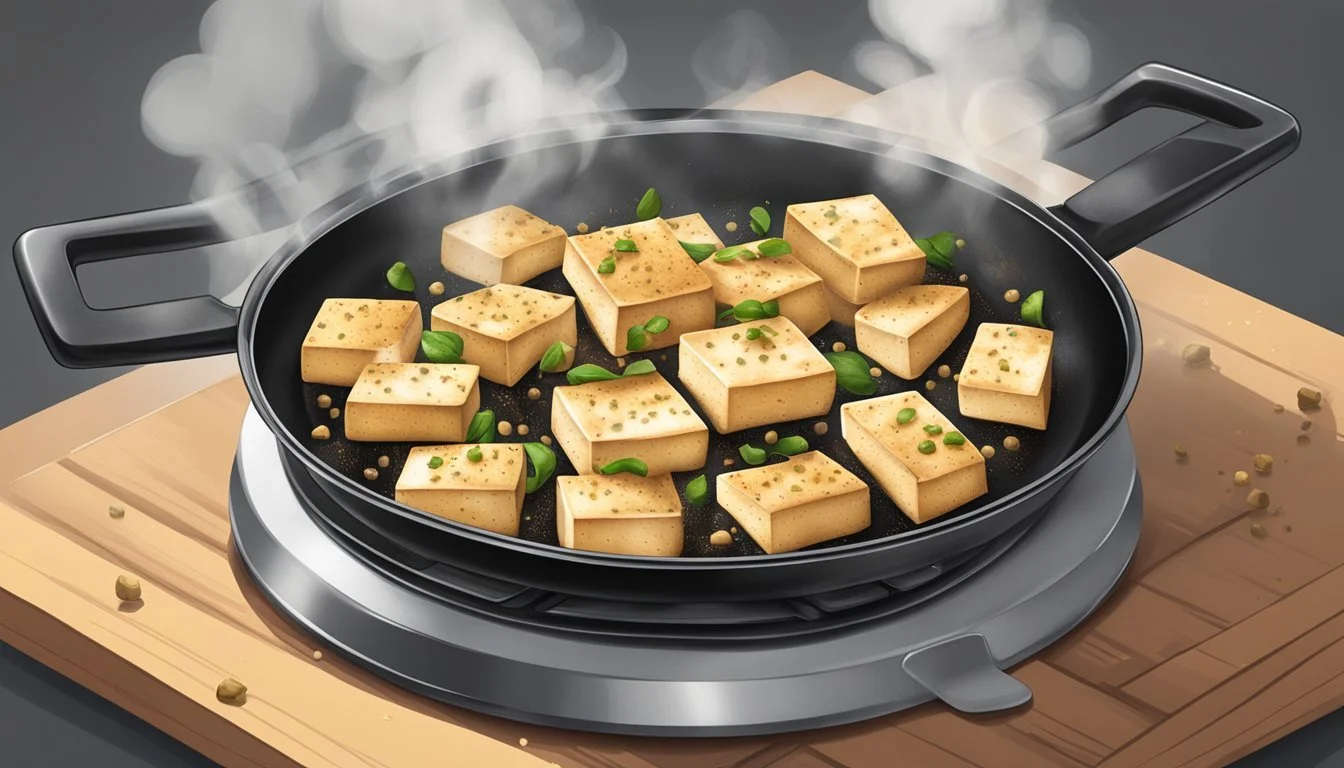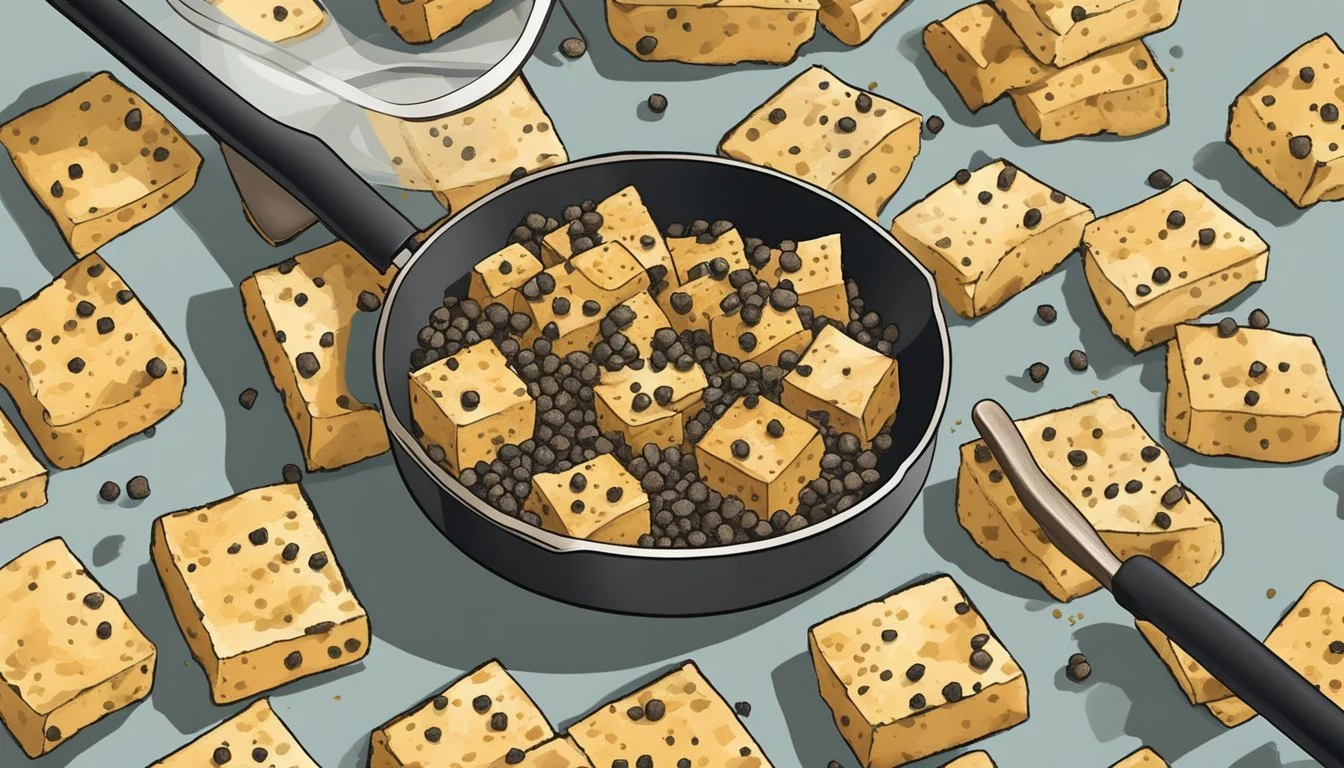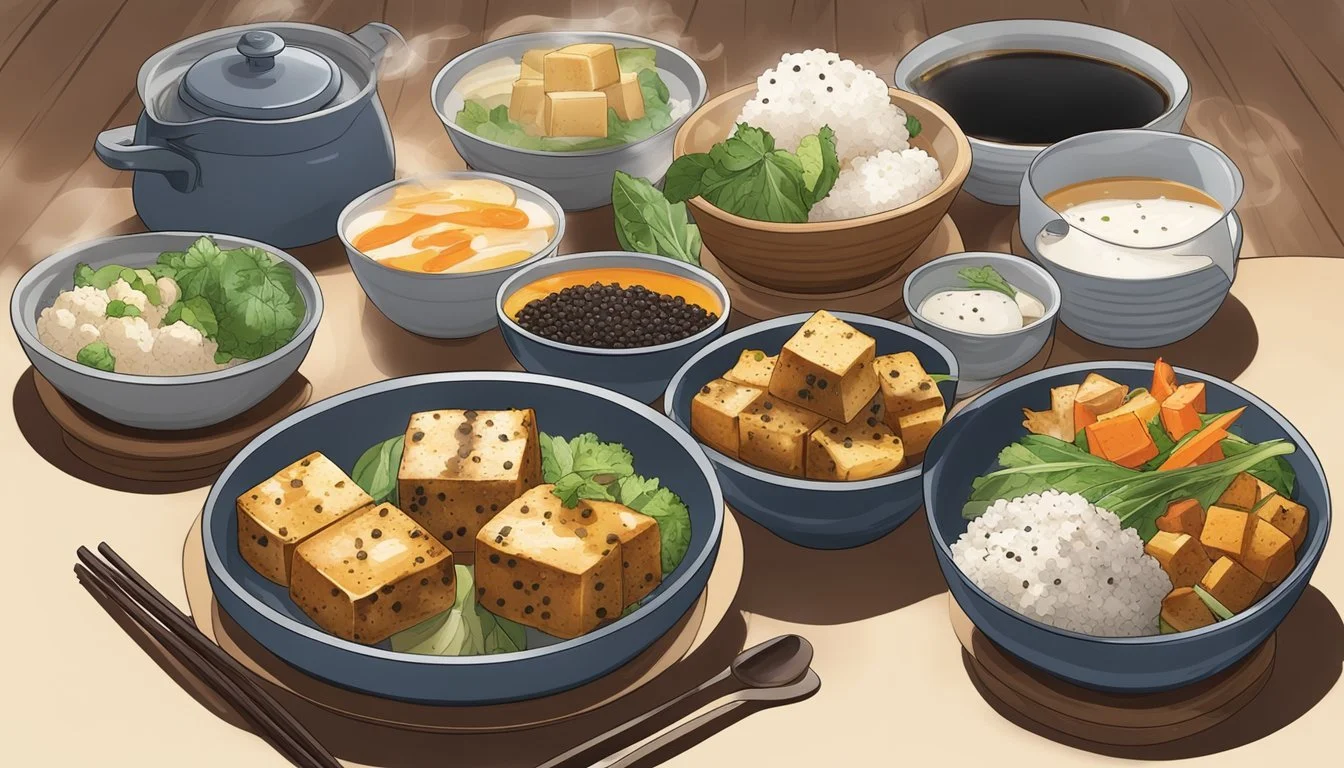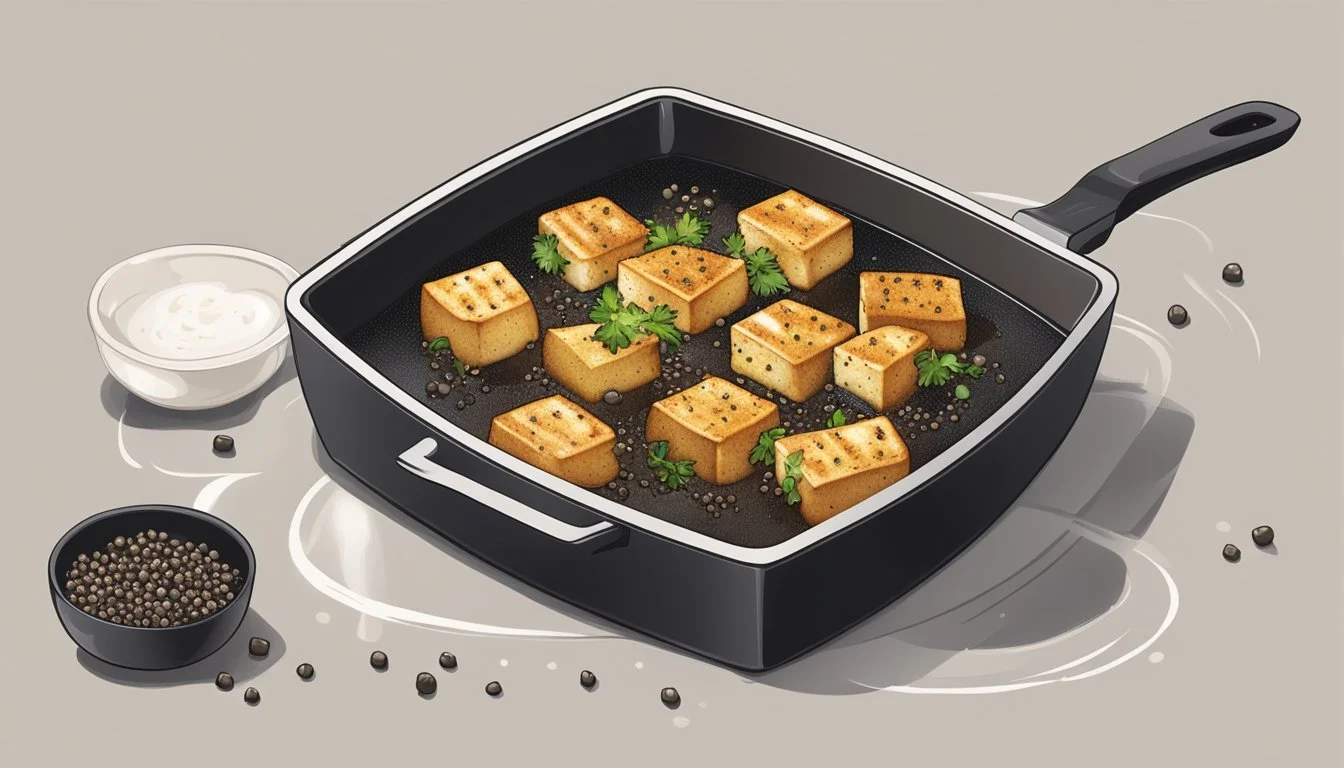Best Way to Reheat Black Pepper Tofu While Preserving Its Crunch
Black pepper tofu is a popular dish known for its bold flavor and delightful texture. Achieving the ideal balance between the savory spice of the black pepper and the crisp exterior of the tofu is paramount in maintaining the integrity of the dish. The challenge often arises when attempting to reheat leftovers without compromising that crispiness.
Reheating black pepper tofu to retain its texture is a matter of selecting the right method and understanding the properties of tofu. Tofu, especially when prepped for a dish like black pepper tofu, absorbs flavors and can develop a satisfyingly crisp outer layer. This crispness is integral to the dish's appeal and should be preserved when reheating.
Traditional reheating methods often fall short when it comes to maintaining crispiness, leading to a compromise on texture and, subsequently, the overall eating experience. It is beneficial to explore techniques that cater to the unique consistency of black pepper tofu. This ensures that the reinvigorated dish not only warms through but also keeps its characteristic crunch that is both expected and cherished by enthusiasts.
Understanding the Basics of Tofu
Tofu, a versatile plant-based ingredient, is known for its varying textures and ability to absorb flavors. Correct preparation is vital to ensure the desired consistency and flavor enhancement, especially in dishes like black pepper tofu.
Types of Tofu and Their Textures
There are multiple types of tofu, each with distinctive textures. Typical classifications include:
Silken Tofu: It has a creamy and smooth texture, often used in soups or blended into sauces.
Firm Tofu: Ideal for frying and baking, this tofu holds its shape well and has a spongy texture that's less delicate than silken tofu.
Extra-Firm Tofu: This type is dense and holds up best in dishes where a meaty texture is desired.
Freezing tofu can transform its texture, resulting in a more porous and chewy product once thawed.
The Importance of Pressing Tofu
Pressing tofu is a crucial step to achieve the desired crispiness in cooked dishes. This process involves:
Wrapping the block of tofu in a clean towel.
Placing a weight on top, such as a heavy book or a specialized tofu press.
Pressing tofu removes excess moisture, which is especially important for firm and extra-firm tofu. This yields a better texture upon cooking and allows the tofu to better absorb flavors like the savory black pepper sauce.
Preparing Tofu for Reheating
Reheating black pepper tofu while maintaining its crispiness requires careful preparation. Each step, from pressing the tofu to the final cornstarch coating, plays a crucial role in ensuring the tofu's texture and flavor are preserved upon reheating.
Pressing Tofu for Optimal Crispiness
Before reheating, it's essential to press the tofu. This step removes excess moisture, which is key for achieving a crispy texture. One should wrap the tofu block in a clean kitchen towel or paper towels and place a weight on top. Allow the tofu to press for at least 15 minutes.
Marinating Tofu for Flavor Enhancement
Marinating tofu not only imparts flavor but also plays a role in the reheating process. A marinade containing black pepper and other complementary spices should coat the tofu evenly. Allow the tofu to marinate for at least 30 minutes to ensure the flavors soak in, enhancing the taste and aroma upon reheating.
Suggested Marinade Ingredients:
Black Pepper: For the characteristic spicy kick.
Soy Sauce: Adds depth with its umami flavor.
Garlic and Ginger: Provides aromatic undertones.
Coating Tofu with Cornstarch for Crispiness
After marinating, tossing the tofu in cornstarch is vital to ensure crispiness upon reheating. Cornstarch acts as a barrier, preventing moisture from seeping in and softening the tofu's exterior. One should coat the tofu pieces evenly with cornstarch, shaking off any excess to avoid a gummy texture.
Each step in this process is carefully designed to enhance the tofu's inherent qualities, ensuring that it remains crispy, flavorful, and enjoyable after reheating.
Choosing the Reheating Method
When reheating black pepper tofu, the method chosen will significantly influence the dish’s final texture and moisture retention. Each technique has its merits depending on the desired outcome and available kitchen appliances.
Advantages of Oven Reheating
Using the oven to reheat tofu maintains a balance between heat distribution and moisture retention, which is critical for preserving the dish's texture. To reheat in the oven:
Preheat to 375°F (190°C) for a standard oven or 325°F (160°C) for a convection oven.
Spread the tofu on a baking sheet and reheat for approximately 10-15 minutes.
This method gradually warms the tofu, allowing the outside to become suitably crisp while ensuring the inside is thoroughly heated without becoming dry.
Microwaving Tofu: Pros and Cons
The microwave offers a quick reheating solution but can result in uneven heating and a less crisp texture. When opting for the microwave:
Heat saucy dishes like tofu curries on medium power to prevent the tofu from becoming too tough.
Reheat for short intervals, typically 1-2 minutes, checking the dish's temperature intermittently.
While microwaving is convenient, it can compromise the crispiness of the tofu, often leaving it softer than other methods.
Using an Air Fryer for Maximum Crispness
The air fryer excels in restoring the crispiness of previously cooked tofu. To use an air fryer:
Preheat the appliance to 400 degrees Fahrenheit.
Arrange the tofu in a single layer for even cooking.
Cook for 5 minutes, shake the basket to redistribute the pieces, then continue for another 5 minutes.
Air fryers work well for reheating by circulating hot air around the tofu, removing excess moisture, and reviving the dish's desirable crispy exterior.
Step-by-Step Reheating Instructions
When reheating black pepper tofu, it's important to choose a method that will maintain the dish's crispiness and flavor. Here are specific techniques for different kitchen appliances.
Reheating in the Oven
Preheat the oven to 375°F (190°C).
Prepare the tofu: Place the tofu on a baking sheet lined with parchment paper to prevent sticking.
Reheat: Place the tofu in the oven and heat it for 10-15 minutes, turning halfway to ensure even heating.
Microwave Reheating Technique
Prepare the tofu: Place the tofu on a microwave-safe plate and cover it with a paper towel to absorb excess moisture.
Heat: Microwave the tofu on high power for 1 minute, check its temperature, and heat in 15-second increments if needed.
Air Fryer Reheating Process
Preheat the air fryer to 350°F (175°C).
Prepare the tofu: Lightly coat the tofu in oil to help retain its texture.
Reheat: Place the tofu in the air fryer basket and heat for 3-4 minutes, or until it's heated through and crispy.
Ensuring Crispiness and Flavor
When reheating black pepper tofu, maintaining its texture and taste is crucial to achieving a dish that is as enjoyable as when it was first cooked. The approach to heating and seasoning factors significantly into the end result.
Importance of Oil Choice
The selection of oil used to reheat black pepper tofu is influential in ensuring the tofu's crispiness is preserved. High smoke point oils are preferred; sesame oil or vegetable oil are excellent options. Sesame oil imparts a unique taste that complements the black pepper's spicy flavor, enhancing the overall savoriness of the dish.
Recommended Oils:
Sesame oil (adds flavor)
Vegetable oil (neutral)
Seasoning Tofu After Reheating
Post-reheating seasoning adjustments are essential for tofu to recover flavor lost during the cooling process. Sprinkling a small amount of salt, or brushing with sauces such as soy sauce or tamari, can add savory, sweet, and salty notes to the dish, invigorating its original taste profile.
Seasoning Touch-ups:
Light salt sprinkle
Soy sauce or tamari (for savory depth)
Serving Suggestions for Enhanced Taste
For an optimal eating experience, serve the reheated black pepper tofu promptly while it is at peak crispiness. Accompany the dish with a drizzle of sesame oil or a soy sauce-based dipping sauce to heighten the complex interplay of flavors.
Enhancement Tips:
Immediate serving after reheating
Sesame oil drizzle
Soy sauce-based sauces (for added taste layers)
Common Mistakes to Avoid
Overheating the Tofu: One should take care not to overheat black pepper tofu as it can lead to a rubbery texture. Overcooked tofu loses its crispy exterior and becomes tough and chewy.
Ignoring Moisture Content: Before reheating, any excess moisture should be eliminated. If the tofu is not pressed properly, it retains water which can steam the tofu during reheating, making it soggy rather than crispy.
Inadequate Draining: Simply removing tofu from its package and reheating it can result in poor texture due to residual water. It's essential to first wrap the tofu in paper towels and press gently to soak up extra moisture.
Skipping the Preheat Step: Whether using an oven or air fryer, one needs to let the appliance preheat properly. Placing tofu in a cold oven or air fryer leads to gradual warming, which can affect crispiness.
Incorrect Use of Wraps: Do not wrap the tofu in foil or parchment paper when reheating. Direct exposure to heat is needed for the tofu to regain its crispy texture. Wrapping it can trap steam and moisture, resulting in a less desirable texture.
To maintain the integrity of black pepper tofu, these common mistakes should be mindfully avoided. With the right preparation and careful reheating technique, the tofu can retain its crispiness and flavor, ensuring a satisfying dish.
Nutritional Information
In addressing the nutritional profile of black pepper tofu, it is important to focus on its value as a source of protein and calcium, as well as its caloric content. This analysis assists in understanding how reheating black pepper tofu can affect its nutritive benefits.
Tofu as a Source of Protein and Calcium
Tofu, the cornerstone of black pepper tofu, is lauded for its high-quality protein content and is an excellent source for those on a vegan diet. On average, 100 grams of tofu can provide about 8 grams of protein, which is essential for muscle repair and growth. Moreover, tofu is enriched with calcium, crucial for maintaining strong bones and teeth, supplying approximately 350 milligrams per 100 grams.
Caloric Content of Black Pepper Tofu
While the caloric density of black pepper tofu can vary based on additional ingredients and cooking methods, 100 grams of tofu typically contain around 70 to 90 calories. The unique seasoning of black pepper, combined with the method of preparation, can slightly alter its caloric value. However, tofu inherently brings a neutral taste, allowing it to absorb the bold flavors of black pepper and other components in the dish, without adding excessive calories.
Accompanying Dishes and Sides
When reheating Black Pepper Tofu to maintain its crispiness, it pairs wonderfully with various side dishes. The right accompaniments not only enhance the meal but also ensure a well-rounded and satisfying dining experience.
Rice Varieties and Their Pairings
For those looking to compliment Black Pepper Tofu with rice, Jasmine and Basmati rice are excellent choices due to their light and fluffy textures. They are subtle in flavor, which balances the boldness of the tofu.
Jasmine rice: Aromatic, it pairs well with the spiciness of the tofu, creating a harmonious blend.
Basmati rice: Its long grains and nutty taste complement the robust pepper sauce while not overpowering it.
Vegetable Options for a Balanced Meal
Incorporating vegetables into a meal with Black Pepper Tofu adds necessary nutrients and flavors. Selections like bell peppers and onions not only align with the tofu's flavor profile but also add color and variety to the plate.
Bell peppers: Sautéed or grilled, they add sweetness and a mild zesty flavor that contrasts well with the peppery tofu.
Onions: When caramelized, they introduce a depth of sweetness that pairs perfectly with the tofu’s savory notes.
Incorporating Tofu into Stir-Fries and Curries
Black Pepper Tofu can be the centerpiece of a variety of dishes. It’s a versatile ingredient in vegan stir-fries and tofu curries, absorbing the distinct flavors of the respective dishes while contributing its crispy texture.
Vegan stir-fry: Mix the tofu with a profusion of vegetables for a colorful and wholesome dish.
Tofu curries: Combine the tofu with a spicy and aromatic curry sauce for a hearty and comforting meal.
Conclusion
When one seeks to reheat black pepper tofu while preserving its texture, they should opt for oven-based reheating. It has proven reliable and is commonly recommended by culinary experts. One should preheat their oven to 350°F and place the tofu on a baking sheet, warming it for 10-15 minutes. This method ensures even heat distribution.
For those who prioritize a crispy exterior, broiling for the last two minutes of the reheating process enhances the texture. The utilization of a wire rack can further aid in keeping the tofu crisp by facilitating airflow.
Reheating tofu in a pan over medium heat with a bit of oil also serves as an acceptable method. One must ensure to cook the tofu for 2-3 minutes on each side until it reaches the desired temperature.
In one's kitchen, meticulousness in following reheating advice is paramount. The individual's confidence in reheating is bolstered through experimentation, ultimately leading to a knowledgeable grasp on the process.
Remember, each type of tofu may have its specific considerations. For instance, firmer tofu withstands reheating temperatures better, ensuring that the dish maintains its original charm. By adhering to these guidelines, one ensures that their black pepper tofu retains its delightful crispiness and flavor.








